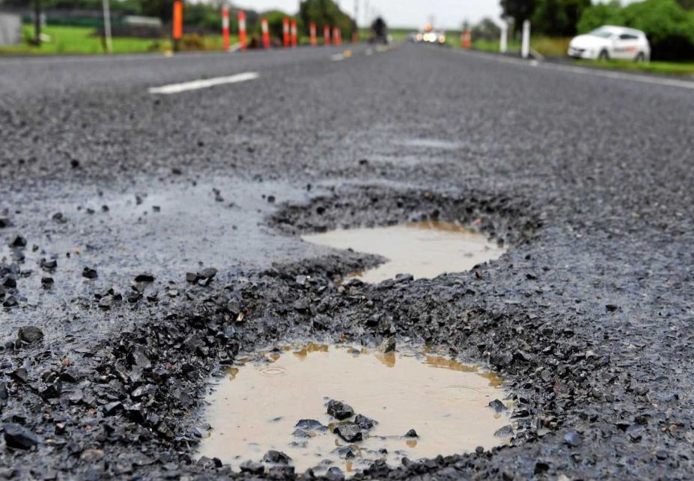Road Problem Diagnosis with Multi-Agent Systems in Traffic
DOI:
https://doi.org/10.58190/imiens.2023.10Keywords:
Multi-agent systems, Signal processing, Traffic control, Transportation safetyAbstract
Today, traffic problems are important factors that cause loss of life and property. The fact that the drivers are not instantly unaware of the changing road and traffic conditions prevents taking early measures and triggers traffic problems. As an alternative to the deficiencies in the existing traffic cameras and observation systems, the model has been developed with each vehicle on the road as a unit of measurement. In the study, it is aimed to evaluate and share the road and traffic conditions between vehicles with a low-budget vehicle network module and to take early measures against possible problems. In this study, an early accident prevention method is presented by using multi-factor structures to monitor vehicle flow in traffic, detect road problems and take early precautions. The road hazard detection model was developed by making the prototype of the proposed system, and the model developed for the studies, experiments and early warning system to prevent possible traffic accidents was recommended for the prevention of traffic accidents in the future.
Downloads
References
WHO, "Road traffic injuries" 2022. [Online]. Available: https://www.who.int/news-room/fact-sheets/detail/road-traffic-injuries (Accessed : 24-July-2022)
F. Temel and H. Özcebe, "Türkiye'de Karayollarında Trafik Kazaları", Sürekli Tıp Eğitim Dergisi, vol. 15, no. 11, pp. 192-198, 2006.
A.P. Muthusamy, M. Rajendran, K. Ramesh, P. Sivaprakash, "A Review on Road Traffic Accident and Related Factors", International Journal of Applied Engineering Research, vol. 10, no. 11, 2015.
A.E. Yilmaz, "An analysis of road traffic accidents in Turkey using logit models", Journal of Statisticians: Statistics and Actuarial Sciences, pp. 11-22, 2017.
M. Behrisch, L. Bieker, J. Erdmann, D. Krajzewicz, "Sumo–simulation of urban mobility", Third International Conference on Advances in System Simulation (SIMUL 2011), 2011.
A. Papadoulis, M. Quddus, M. Imprialou, "Evaluating the safety impact of connected and autonomous vehicles on motorways" Accid Anal Prev. vol. 124, pp. 12–22, 2019.
M. Fellendorf and P. Vortisch, "Microscopic traffic flow simulator VISSIM fundamentals of traffic simulation", New York: Springer-Verlag, pp. 63–93, 2010.
M. Herrera, M.P. Hernández, A.K. Parlikad, J. Izquierdo, "Multi-Agent Systems and Complex Networks: Review and Applications in Systems Engineering", Processes, vol. 8, no. 3: 312, 2020.
A.S. Nair, T. Hossen, M. Campion, D.F. Selvaraj, N. Goveas, N. Kaabouch, P. Ranganathan, "Multi-Agent Systems for Resource Allocation and Scheduling in a Smart Grid", Technology and Economics of Smart Grids and Sustainable Energy, vol. 3, no. 15, 2018.
T. Morstyn, B. Hredzak, V.G. Agelidis, "Network topology independent multi-agent dynamic optimal power flow for microgrids with distributed energy storage systems", IEEE Transactions on Smart Grid, vol. 9, pp. 3419–3429, 2016.
J. Barbosa, P. Leitao, "Simulation of multi-agent manufacturing systems using agent-based modelling platforms", IEEE International Conference on Industrial Informatics (INDIN), pp. 477–482, 2011.
E.J. González, A.F. Hamilton, L. Moreno, R.L. Marichal, V.Muñoz, "Software experience when using ontologies in a multi-agent system for automated planning and scheduling", Software: Practice and Experience, vol. 36, pp. 667–688, 2006.
J. Cerquides, A. Farinelli, P. Meseguer, S.D. Ramchurn, “A Tutorial on Optimization for Multi-Agent Systems”, The Computer Journal, vol. 57, no. 6, pp. 799-824, 2014.
M.F. Wood and S.A. DeLoach, "An overview of the multiagent systems engineering methodology", Agent-Oriented Software Engineering, pp. 207–221, 2000.
M. Wooldridge, "An introduction to multiagent systems", John Wiley & Sons, 2009.
A. Dorri, S. S. Kanhere, R. Jurdak, "Multi-Agent Systems: A Survey,", IEEE Access, vol. 6, pp. 28573-28593, 2018.
A. M. Talib ve N. E. M. Elshaiekh , "Multi Agent System-Based on Case Based Reasoning for Cloud Computing System", Academic Platform - Journal of Engineering and Science, vol. 2, no. 2, pp. 34-38, 2014.
A.M. Talib, R. Atan, R. Abdullah, M. Azrifah, “Towards a Comprehensive Security Framework of Cloud Data Storage Based on Multi Agent System Architecture,” Journal of Information Security, vol. 3, no. 4, pp. 295-306, 2012.
A.M. Talib, R. Atan, R. Abdullah, M. Azrifah, “CloudZone: Towards an Integrity Layer of Cloud Data Storage Based on Multi Agent System Architecture,” Proceeding of the International Conference on Open Systems (ICOS), pp. 127-132, 2011.
A. Forestiero, "Multi-agent recommendation system in Internet of Things", 17th IEEE/ACM International Symposium on Cluster, Cloud and Grid Computing (CCGRID), pp. 772–775, 2017.
H.L. Zhang and H.C. Lau, "Agent-based Problem Solving Methods in Big Data Environment", Web Intelligence and Agent Systems, vol. 12, no. 4, pp. 343-345, 2014.
W. He, G. Chen, Q. L. Han, W. Du, J. Cao, F. Qian, "Multiagent Systems on Multilayer Networks: Synchronization Analysis and Network Design", IEEE Transactions on Systems, Man, and Cybernetics: Systems, vol. 47, no. 7, pp. 1655-1667, 2017.
N. Hooshangi and A. Alesheikh, “Developing an Agent-Based Simulation System for Post-Earthquake Operations in Uncertainty Conditions: A Proposed Method for Collaboration among Agents”, ISPRS International Journal of Geo-Information, 2018.
B.P. Gokulan, D. Srinivasan, C.K. Tham, “Multi-Agent System in Urban Traffic Signal Control”, IEEE Computational Intelligence Magazine, vol. 5 no. 4, pp. 43-51, 2010.
F. Derakhshan and S. Yousefi, "A review on the applications of multiagent systems in wireless sensor networks", International Journal of Distributed Sensor Networks, vol. 15, no. 5, 2019.
K.D. Kusano and H.C. Gabler, "Safety benefits of forward collision warning, brake assist and autonomous braking systems in rear-end collisions", IEEE Trans Intell Transp Syst. vol. 13, no. 4, pp. 1546–1555, 2012.
M. Lindman, J. Nyström, L. Jakobsson, A. Ödblom, "Monitoring the past and the future of a passenger car auto brake system", Conference on Biomechanics of Impacts, 2012.
E. Rosen, "Autonomous emergency braking for vulnerable road users", Proceedings of IRCOBI conference, 2013.
U. Sander, “Predicting Safety Benefits of Automated Emergency Braking at Intersections - Virtual simulations based on real-world accident data”, Department of Mechanics and Maritime Sciences, Chalmers University of Technology. 2018.

Downloads
Published
Issue
Section
License
Copyright (c) 2023 Intelligent Methods In Engineering Sciences

This work is licensed under a Creative Commons Attribution-ShareAlike 4.0 International License.






